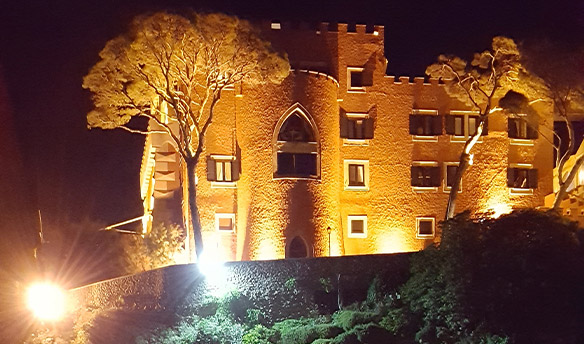

The elephant and obelisk were united by Pope Alexander VII. They stand today in Piazza della Minerva, in front of the Church of Santa Maria Sopra Minerva and in sight of the Pantheon.
The obelisk was constructed in the sixth century BC and was brought to Rome around 30 BC. At that time, Egypt was under Rome’s control and the worship of Egyptian deities had become popular in Rome.
The area around Piazza della Minerva was originally home to the temples of Egyptian deities Isis and Serapis, and to the temple of the goddess Minerva. Later, from around 1266, that swathe of land was occupied by the Convent of Santa Maria Sopra Minerva. The convent, which is beside the church, later became known as the inquisition’s convent.
The obelisk was discovered during renovations at the convent in 1665, probably a legacy of the Egyptian temples. The Pope wanted to display the obelisk in the piazza and he requested ideas for a base. Gian Lorenzo Bernini’s design of an elephant won the Pope’s approval and it was sculpted by Bernini’s pupil, Ercole Ferrata.
Alexander VII’s choice may have been prompted by a novel that he owned, printed in 1499: Hypnerotomachia Poliphili (The Dream of Poliphilus or Polipho’s Strife of Love in a Dream). The book survives and the woodcut of its elephant character bears a resemblance to Bernini’s drawings.
Bernini’s original design was modified in one significant respect. To Bernini’s annoyance, the project supervisor, Dominican Friar Giuseppe Paglia, doubted the elephant’s ability to support the obelisk without reinforcement and he proposed the marble plinth on which the elephant now stands.
Roughly translated, the words on the plinth mean:
Whoever reads the inscriptions of Egypt’s wisdom, supported by the elephant, the strongest of animals, will understand that it requires a robust mind to carry solid wisdom.

Alexander VII, sadly, never saw the finished sculpture: he died shortly before its completion in 1667. The side of the plinth furthest from the church has a dedication to him.
The elephant is often known as “Il Pulcin della Minerva”. The word “pulcino” can mean “chick”, but it is also a term of affection: “tot”, “little one”, or “young one”. Looking at the elephant’s expression, the affection is understandable, and, in elephant terms, the sculpture is relatively small!
It has also been suggested that “pulcin” may have been corrupted from “porcino”, meaning “little pig”. Most Romans at that time would have been more familiar with a pig than an elephant.
The elephant stands in front of the church, its head and trunk turned to the right. There is a story that, to show his annoyance with Friar Paglia, Bernini sited the elephant with its bottom and tail pointing to the friar’s office. Another version is that Bernini designed the elephant to turn its back on the inquisition’s convent. There is no evidence to suggest that the elephant’s original position, as approved by the Pope, was changed.
Most importantly, whichever way you enter the piazza, the elephant seems to look towards you, and its expression is friendly.

The elephant in Piazza della Minerva is rarely alone and always seems happy to welcome new faces.



